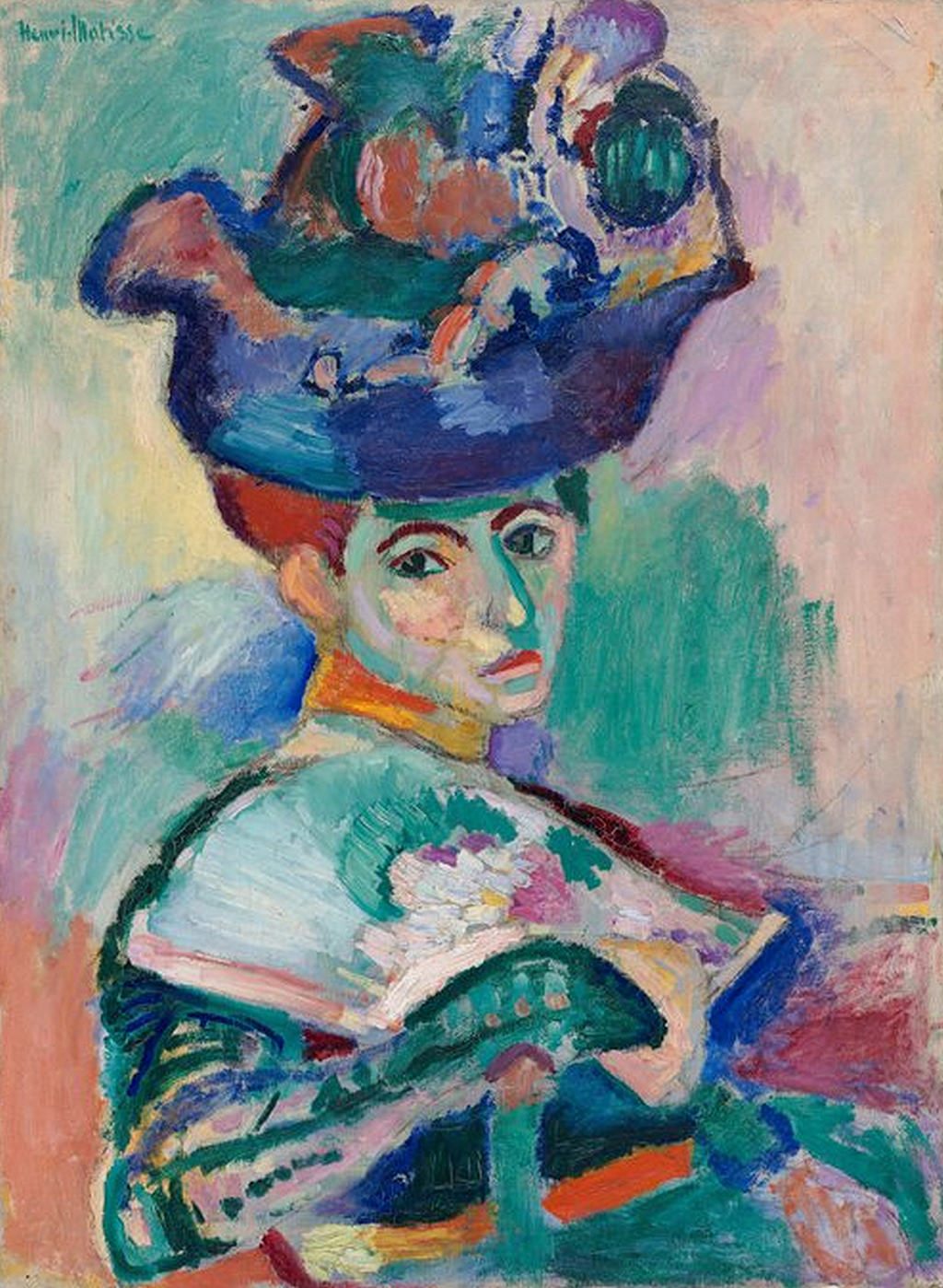La Femme au Chapeau, to use its original French title, depicts the artist's wife, Amelie Parayre. The portrait was completed in 1905, just a year before another of his most famous paintings in Le Bonheur de Vivre.
The two feature similar colour schemes that were very much a part of the Fauvist movement, of which Matisse was one of the best known contributors. Across his career he would become involved in a whole host of different art movements as well as a variety of different techniques too, though Fauvism remains a key part of his final oeuvre. The painting received large amounts of criticism when it was initially put on display, but over time this style of colour would eventually persuade the critics of its merits.
The term for this art movement came from the French for "wild beasts" which is precisely how the artists who produced work in this manner were initially described. It is easy to understand why they faced so much resistance when you consider the extraordinary colour schemes which marked a new moment in the development of art history. It challenged the norms of the art world, and critics typically take time to adjust to these new developments. Woman with a Hat makes use of colours that would never have been used in portrait art before. The combination of them together also clashed with an aggressive modernism which avoided all subtlety.
The expressive style of artists such as this would benefit from the rise in popularity of photography, who reduced the need for realistic portrait painters who had dominated throughout the previous centuries going back to the Renaissance. Painters now had to offer something other than faithful representation and this is where the members of art movements such as Expressionism and Post-Impressionism would be seen as valuable and highly skilled. Matisse himself found his own niche, capturing elements of French life in the early 20th century with a brightness unseen before. One can see similarities with the work of German artists such as August Macke and Ernst Ludwig Kirchner, though they used dark tones for greater contrast.
Amélie Matisse, the artist's wife, is the female model found posing here. Her clothing style is typical of the French bourgeoisie, with long sleeved gloves and a fan. She looks elegant and classy, to which her husband would no doubt have been both proud but also excited to have such rich content from which to work. She holds a serious expression, no doubt as instructed by Henri, and she peers off to the left of us. Her face is lean, without the slightest suggestion of anything but beauty and one can understand how she came to be used as a muse by her husband on so many occasions. Her pose looks like that of a professional model, suggesting that she has also done this many times before. Her dress is in tones of green and blue, with a bright red belt cutting across horizontally. Her hair is light brown, but predominantly covered by the extraordinary hat which dominated the composition.
With this artwork arriving in 1905, Matisse was experiencing a new direction within his career. He was moving away from his earlier paintings which had delivered a greater clarity of form - he now desired to rely more on expressionist methods than a realist format. Colour played an important role in constructing form within these newer compositions, with Le Bonheur de Vivre being another example of that. This reduction in detail would give the appearance of a study piece in previous generations, but they were now to be considered as completed artworks, delivered in a modern construction. This change explains how some have struggled to except more modern styles of art, with the path to abstraction being further advanced by the likes of Miro, Picasso (a personal friend and rival to Matisse) and Kandinsky.
This stunning piece can be found in the collection of the San Francisco Museum of Modern Art. It has changed hands several times and was eventually donated to this fine art institution in 1990 by Elise S. Haas, as part of a larger group of work that included paintings from a variety of related artists as well as a number of sculptures. Whilst there was already an impressive selection of work to be found at the venue, it was lifted even further with some of the highlights of the artwork gifted here. The piece measures 80.65 cm × 59.69 cm (31 3⁄4 in × 23 1⁄2 in) and is considered to be one of the most famous paintings to have come from either Matisse's career or the Fauvist movement more generally. It is also significant within art history to find the initial rejection of colour being later accepted and then truly loved.





